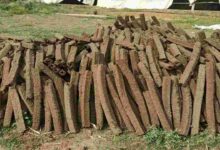Success story: After switching from rice to maize growing and making a profit of Rs 70,000 at a cost of Rs 30,000, an Andhra Pradesh farmer gained notoriety
Success story: Reducing paddy planting is a topic of concern across the nation due to the growing shortage of groundwater. Rather, crops with cheap costs, high profits, and little water usage should be cultivated. Among them is maize, a widely grown crop. A farmer in Andhra Pradesh switched from growing rice to growing maize, and because of the money he made, other farmers in the region looked up to him. This farmer is called Bandaru Srinivas Rao, and he lives in the Andhra Pradesh district of Guntur’s Vatticherukuru village. With a 30,000-rupee investment, this farmer may make one lakh rupees in a season. This translates to a Rs 70,000 per acre profit. The crop of rabi maize matures in four to five months.

The Inspiring Journey of Farmer Rao from Rice to Riches
Prior to 2000, the farmer said he farmed rice and moong. However, he later began growing maize, which began to provide high profits, and he has continued to do so ever since. Because of these farmers, Andhra Pradesh now contributes significantly to the nation’s overall maize output. In comparison to other states, this one has better maize production. For technical support and other needs, Rao stays in contact with the Indian Maize Research Institute. Rao has also received several accolades at the national level from organizations such as the Indian Council of Agricultural Research.
Revolutionizing Corn Farming
Rao has also created corn-sowing equipment that enables farmers to swiftly complete the sowing process. This farmer uses seed drill equipment to carry out the sowing process. Rao has planted maize on 22 acres, 10 of which are his own and the other portion is rented, after realizing the potential benefit from the crop. For the rented land, he pays a fee of Rs 20,000 per acre.
Using zero-tillage technology
What makes him unique is that he has farmed several fields using zero-tillage technology, which benefits farmers financially and environmentally. Zero tillage refers to the practice of machine-sowing maize without plowing after the previous crop is harvested. This technique of sowing allows fertilizer and seeds to be planted simultaneously without requiring the land to be ploughed.
The zero-tillage machine functions similarly to a standard drill, except it has a knife-like tine. Through the groove-shaped fracture created by this tine in the soil, the fertilizer and seed are able to reach the proper depth and amount. Rao’s creative cultivation of maize has made it more lucrative than rice. Farmers first created a variety of agricultural tools, such as bicycle rings and wheel-based hole makers, to use this method for planting maize.
Farming with no tillage
Senior scientist Dr. Shankar Lal Jat of the Indian Maize Research Institute (ICAR) is also developing crop production technologies based on zero tillage. He listed the advantages of farming with no tillage. In addition to mitigating the effects of climate change, this kind of farming lowers expenses, enhances soil health, minimizes water loss from mulching, plants crops on schedule, and makes efficient use of the soil’s residual moisture and minerals.
Maximizing Maize Yields with Zero Tillage Technology
He also emphasized the need to use zero-tillage technology in light of the emergence of high-yielding single-cross hybrid maize. Currently, Andhra Pradesh yields more than 70 quintals of maize per acre on average. Although price realization has lagged behind the MSP in recent years, this is expected to change as more maize is used for bioethanol, which will further boost the advantages of zero-tillage technology. As of right now, maize prices in most mandis are rising beyond MSP.

